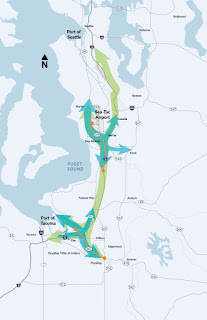Sunday, 13 December 2020
Sunday, 6 December 2020
Sunday, 29 November 2020
Sunday, 15 November 2020
Sunday, 25 October 2020
Sunday, 11 October 2020
Sunday, 27 September 2020
Sunday, 20 September 2020
Sunday, 30 August 2020
Funding ‘High Visibility’ Infrastructure
Funding ‘High Visibility’ Infrastructure
It is well known that China has brought a lot of high investments in projects initiated in developing countries where they have financed and built roadways, transit lines, airports and any other major form of transport infrastructure you can think of. And it is not only restricted to that; Chinese yuan has also been spent on hospitals, schools and community development centres. As a result, it has helped them to consolidate their Belt and Road Initiative (BRI), while demonstrating themselves as a soft power.
Other Asian economies though aren’t just sitting and watching. In recent developments, India has decided to fund the Greater Male Connectivity Project (GMCP); which is said to be the “’largest civilian infrastructure project in the Maldives’. The financial package will have a grant component of $100 million and a new Line of Credit of $400 million” (The Wire). This project is said to give better connectivity to the four islands, boosting economic activity by generating employment and promoting more tourism in the region.
It would be interesting to see how this race between these countries to fund ‘high visibility’ infrastructure would turn out for the host countries themselves.
Sunday, 16 August 2020
State of Indian Infrastructure- Part 1
State of Indian Infrastructure- Part 1
India celebrated its 74th Independence Day celebration yesterday. Prime Minister Modi, in his annual address to the nation, had announced several new measures. One of them is the declaration that India will spend more than ₹100 lakh crore (approx. $1.3 trillion in USD) on the National Infrastructure Pipeline Project. “There is a need to give a new direction to the overall infrastructural development of the country to move India towards modernity at a fast pace. This need will be met through the National Infrastructure Pipeline Project," he said” (Livemint), identifying 7000 projects which would be developed in this direction.
The country has been experiencing a downturn in its economy even before the pandemic hit. It is expected that these projects would focus more on aspects such as climate resiliency and sustainable energy access infrastructure into the recovery response to the COVID-19 crisis.





























